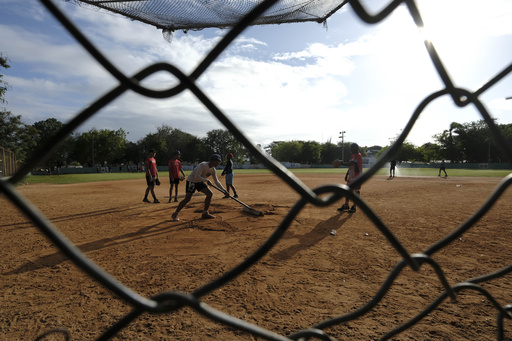
Major League Baseball (MLB) is advocating for an international draft, believing it would significantly reduce malpractice in the recruitment of players from Latin America. Nonetheless, this notion is met with resistance from the players’ union, which has maintained its opposition for years.
Baseball Commissioner Rob Manfred recently expressed his views, emphasizing that the draft would enhance transparency and minimize illicit agreements, an issue he deems paramount against the backdrop of existing rule violations. He remarked, “It’s not just a matter of numbers or finances; it’s primarily about creating a transparent environment to halt rule-breaking activities in the signing market.”
Currently, MLB franchises reach preliminary verbal accords with talent from countries like the Dominican Republic and Venezuela when these players are as young as 13 or 14, before they reach the signing age of 16. This year, the international signing period for players not residing in the U.S., Puerto Rico, or Canada commenced in January, targeting those born between September 1, 2007, and August 31, 2008.
Concerns over exploitation are prevalent, including practices like loan-sharking and age deception. Manfred noted previous investigations have revealed instances of players lying about their ages, such as a situation where an alleged 14-year-old was actually 19 during negotiations with the San Diego Padres.
Manfred highlighted the millions MLB has invested annually to uncover misconduct, acknowledging that while they catch some violators, many elude detection, suggesting that the extent of unlawful practices may exceed their current findings.
Some Dominican officials see merit in the implementation of an international draft; however, due to regulations set by the collective bargaining agreement between the MLB and the players, any such draft cannot proceed without the players’ agreement.
During previous collective bargaining discussions in 2021-22, MLB proposed a 20-round draft, complete with fixed bonuses set to begin in 2024, combining a draft guarantee of $191 million with an expectation of $4 million to assist undrafted players. The players’ union responded with their version, suggesting a guarantee of $260 million and other provisions for bonus negotiations and joint enforcement committees.
The players’ union rejected the league’s final draft proposal in July 2022, postponing the issue until the negotiation period for the labor contract, which expires in December 2026.
Union leader Tony Clark expressed skepticism about the necessity of an international draft, believing that their proposed framework would better safeguard the interests of players while ensuring they receive a more equitable valuation.
In the absence of a draft, MLB teams spent $181 million on international amateurs in 2024—about $10 million less than initially proposed by the league—and a total of $199 million in the current year, reflecting growing spending when MLB’s projections for guarantees were anticipated to escalate to $208 million.
A MLB study from 2023 revealed that merely 6% of international amateurs who signed between 2012 and 2016 eventually made it to the major leagues, with only 30% of those signing for seven-figure bonuses achieving the same.
Clark opposes the draft, arguing that the flaws within the signing process in Latin America stem from existing practices rather than the absence of a draft itself. He pointed out that teams engage with young prospects even at the age of 12 or 13, making informal verbal agreements that lack legitimacy, a situation he believes could be remedied outside of instituting a draft.
Additionally, the international draft is just one of numerous topics under discussion between MLB and the players’ union. A vital aspect involves tying the league’s proposals regarding international amateur compensation to stipulations affecting expenditure on major league free agents.
When players transition to free agency, they often receive qualifying offers from their former teams, which come with salaries based on averages of the top 125 players. If these players decline and join a new team, that team forfeits one or two amateur draft picks as well as a part of its international signing budget.
This qualifying structure can hinder bidding, particularly for players nearing or exceeding the age of 30. Scott Boras, a prominent agent, highlighted this trend with examples involving third baseman Matt Chapman and pitchers Blake Snell and Nick Martinez.
While MLB had previously entertained the idea of eliminating the qualifying offer system in discussions surrounding the international draft, it did not convince the players at that time. However, the modification of this system may resurface in future negotiations as part of the evolving dialogue leading up to the next collective bargaining agreement.

